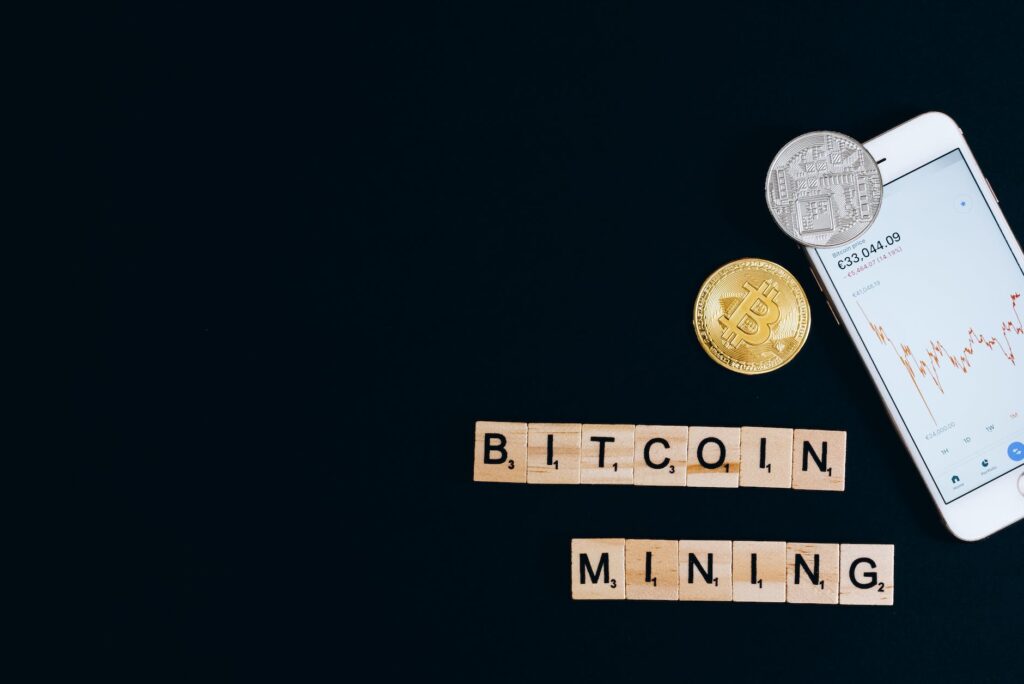Introduction to Bitcoin Mining
To understand the concept of bitcoin mining, it is essential to grasp the fundamentals of the Bitcoin network and the role miners play within it.
What is Bitcoin Mining?
Bitcoin mining is the process by which new bitcoins are created and verified. It serves two main purposes: the addition of new transactions to the blockchain and the issuance of new bitcoins. Miners use powerful computers to solve complex mathematical problems that validate and secure transactions on the network.
The mining process involves compiling transactions into blocks and adding them to the blockchain, a public ledger that records all bitcoin transactions. Miners compete to solve mathematical puzzles, and the first one to find a solution is rewarded with newly minted bitcoins. This process is what makes bitcoin a decentralized digital currency, as miners collectively maintain the integrity and security of the network.
The Role of Miners in the Bitcoin Network
Miners play a crucial role in ensuring the transparency and security of the Bitcoin network. By solving mathematical problems through a process known as proof of work (PoW), miners validate transactions and prevent fraud. Their computational power and effort contribute to the consensus mechanism that governs the network.
Miners also help maintain the decentralization of the network. As more miners participate, the network becomes more secure and resistant to attacks. The distributed nature of mining ensures that no single entity can control the entire network or manipulate transactions.
In addition to validating transactions, miners are rewarded for their efforts. They receive two types of rewards: block rewards and transaction fees. Block rewards are the newly minted bitcoins that are given to the miner who successfully solves the mathematical puzzle and adds a new block to the blockchain. Transaction fees, on the other hand, are voluntary fees paid by users to prioritize their transactions and incentivize miners to include them in the next block.
Understanding the basics of bitcoin mining and the role miners play sets the stage for exploring the intricacies of how mining works, the challenges involved, and the future of this essential aspect of the Bitcoin network. To learn more about the mining process, continue reading our article on how does bitcoin mining work?.
How Bitcoin Mining Works
To understand the intricacies of bitcoin mining, it’s important to grasp the concept of the blockchain and the role of proof of work. Additionally, understanding the relationship between mining nodes and miners is key to comprehending the mining process.
Blockchain and Proof of Work
Bitcoin mining is an essential component of the decentralized bitcoin network. It relies on the blockchain, a distributed ledger that records all bitcoin transactions. The blockchain ensures transparency, security, and immutability of the transactions.
To validate and add new transactions to the blockchain, miners must solve complex mathematical problems. This process is known as proof of work. Miners compete to find a solution that satisfies certain cryptographic criteria. The first miner to solve the puzzle is rewarded with newly minted bitcoins and transaction fees. This solution is then added to the blockchain, creating a new block of transactions.
The proof of work concept ensures that the bitcoin network remains secure and resistant to tampering. It requires a significant amount of computational power and energy expenditure, making it difficult for malicious actors to manipulate the blockchain.
Mining Nodes and Miners
Mining nodes play a crucial role in the bitcoin network. They are responsible for validating transactions and maintaining a copy of the blockchain. However, not all nodes are involved in the mining process.
Miners are specialized participants in the network who dedicate their computational resources to solving the complex mathematical problems mentioned earlier. They verify the validity of transactions and ensure the accuracy of the blockchain. Miners collect transactions from the network and include them in blocks, which are then added to the blockchain.
To mine bitcoins, miners use specialized hardware known as mining rigs or ASICs (Application-Specific Integrated Circuits). These devices are designed to perform the necessary computations efficiently. The mining software running on these rigs enables miners to connect to the bitcoin network, receive transactions, and participate in the mining process.
Miners often join mining pools to increase their chances of successfully mining a block. Mining pools are collaborative efforts where multiple miners combine their computational power to solve the mathematical problems collectively. Once a block is successfully mined, the rewards are distributed among the participants based on their contributions.
Understanding how bitcoin mining works lays the foundation for comprehending the mining process, rewards, and the challenges associated with it. For more information on specific aspects of bitcoin mining, such as mining hardware and software, mining difficulty, and how to get started, refer to our articles on bitcoin mining hardware, bitcoin mining software, and how to start bitcoin mining.
The Mining Process
Bitcoin mining involves the process of validating and adding new transactions to the blockchain, the decentralized ledger that records all Bitcoin transactions. This process requires specialized hardware, software, and often collaboration through mining pools.
Mining Hardware
Bitcoin mining hardware plays a crucial role in the mining process. As the computational power required for mining has increased over time, specialized hardware known as Application-Specific Integrated Circuits (ASICs) has become the norm. These ASIC miners are designed specifically for mining Bitcoin and offer significantly higher hash rates compared to traditional CPUs or GPUs.
The efficiency and hash rate of mining hardware are essential factors to consider when choosing the right equipment. Manufacturers continue to evolve and release new models of mining hardware, each offering varying levels of efficiency and performance. To explore different types of mining hardware and their specifications, you can refer to our article on bitcoin mining hardware.
Mining Software
In addition to hardware, mining software is necessary to connect the mining hardware to the Bitcoin network. Mining software enables miners to communicate with the network, receive new transactions, and solve complex mathematical puzzles to validate transactions and create new blocks.
There are various mining software options available, each with its own features and compatibility with different operating systems. Some popular mining software includes CGMiner, BFGMiner, and EasyMiner. To find the best mining software for your needs, you can refer to our article on best bitcoin mining software.
Mining Pools
Mining pools provide an avenue for miners to combine their computational power and increase their chances of successfully mining a block. By pooling resources, miners can collectively solve complex mathematical problems and distribute the resulting rewards among the pool participants.
Joining a mining pool can be beneficial for individual miners, especially those with limited resources or mining hardware. By participating in a mining pool, miners can earn more frequent and predictable rewards compared to solo mining. To learn more about mining pools and how to choose the right one, you can refer to our article on bitcoin mining pools.
It is important to note that while mining pools offer advantages, they also introduce centralization concerns. As large mining pools accumulate significant computational power, there is a risk of potential concentration of control within the network. This has led to discussions around decentralization and the importance of maintaining a distributed network.
By understanding the mining process and the role of mining hardware, software, and pools, one can gain insight into the intricacies of Bitcoin mining. As technological advancements continue to shape the mining landscape, staying informed about the latest developments and trends is crucial for anyone interested in this evolving field.
Mining Rewards and Incentives
Bitcoin mining is not only essential for the security and operation of the Bitcoin network but also provides rewards and incentives to miners. In this section, we will explore the two main sources of rewards in Bitcoin mining: block rewards and transaction fees.
Block Rewards
Block rewards are the primary source of income for miners. When a miner successfully solves a complex mathematical problem and adds a new block to the blockchain, they are rewarded with a certain amount of newly minted bitcoins. This reward serves as an incentive for miners to contribute their computational power to the network.
The block reward is halved approximately every four years through an event known as the “halving.” Initially, when Bitcoin was created, the block reward was set at 50 bitcoins per block. However, due to a predetermined schedule, the block reward reduced to 25 bitcoins in 2012, 12.5 bitcoins in 2016, and is currently set at 6.25 bitcoins. This reduction in block rewards helps to control the issuance of new bitcoins and maintain scarcity.
Transaction Fees
In addition to block rewards, miners also receive transaction fees as part of their mining rewards. Whenever a user sends a Bitcoin transaction, they have the option to include a transaction fee. These fees are collected by miners who include the transaction in a block they mine.
Transaction fees serve two purposes. First, they act as an incentive for miners to prioritize and include transactions in their blocks. Miners typically prioritize transactions with higher fees since they have limited space within each block. Second, transaction fees help to prevent spam and denial-of-service attacks on the network by requiring a cost for each transaction.
The amount of transaction fees in a block varies depending on the number and size of transactions being processed. Miners typically select transactions with higher fees to maximize their earnings. Transaction fees are paid by the sender of the transaction and are typically calculated based on the size of the transaction in kilobytes and the current network congestion.
To get an estimate of the current block rewards and transaction fees, you can refer to a Bitcoin mining calculator, like the one provided by HashCoins.
Understanding the rewards and incentives in Bitcoin mining helps shed light on the economic aspects of the mining process. Miners contribute their computational power to secure the network, and in return, they receive block rewards and transaction fees. As the Bitcoin network evolves, the balance between block rewards and transaction fees may shift, but the incentives for miners to continue their vital role in the network remain significant.
Challenges and Considerations
As Bitcoin mining continues to evolve, it is important to acknowledge and address the challenges and considerations that come with this process. Three key areas of concern are energy consumption, mining difficulty, and centralization concerns.
Energy Consumption
Bitcoin mining is an energy-intensive process. The computational power required to solve complex mathematical problems and validate transactions consumes a significant amount of electricity. As the Bitcoin network grows, so does the energy consumption associated with mining.
The energy consumption of Bitcoin mining has raised environmental concerns, particularly due to the reliance on fossil fuels for electricity generation. However, it is worth noting that miners are constantly exploring more sustainable and renewable energy sources to power their operations.
To gain a better understanding of the energy requirements of Bitcoin mining, you can use a bitcoin mining calculator to estimate the energy consumption based on factors such as mining hardware efficiency and electricity costs.
Mining Difficulty
Bitcoin mining difficulty refers to the level of complexity in solving mathematical problems required to mine new blocks. The difficulty is adjusted approximately every two weeks to ensure that new blocks are added to the blockchain at a consistent rate.
As more miners join the network, the mining difficulty increases. This adjustment is designed to maintain a steady block production time of around 10 minutes. The increasing mining difficulty requires miners to invest in more powerful hardware to remain competitive and maintain profitability.
You can track the current mining difficulty on various platforms to stay informed about the ever-changing landscape of Bitcoin mining. Understanding the bitcoin mining difficulty helps miners make informed decisions about their mining strategies and equipment.
Centralization Concerns
Centralization concerns arise from the concentration of mining power in the hands of a few individuals or organizations. As mining becomes more competitive and resource-intensive, smaller miners may struggle to compete with larger mining operations. This concentration of power goes against the decentralized nature of cryptocurrencies like Bitcoin.
Mining pools, where multiple miners combine their resources to mine collectively and share rewards, have become a popular way to mitigate the risks of centralization. By joining a bitcoin mining pool, individual miners can increase their chances of earning rewards while maintaining decentralization to some extent.
Efforts are being made to address centralization concerns through technological advancements and community-driven initiatives. It is important for the Bitcoin community to continue exploring ways to ensure a fair and decentralized mining ecosystem.
Understanding the challenges and considerations of Bitcoin mining allows miners and enthusiasts to make informed decisions and contribute to the ongoing development of the Bitcoin network. By staying updated on the latest advancements, environmental impacts, and regulatory changes, the future of Bitcoin mining can be shaped in a way that aligns with the goals of decentralization and sustainability.
The Future of Bitcoin Mining
As Bitcoin mining continues to evolve, several key factors shape its future. Technological advancements, environmental impact, and the regulatory landscape all play significant roles in determining the direction of Bitcoin mining.
Technological Advancements
Technological advancements have always been at the forefront of Bitcoin mining. As the demand for more efficient and powerful mining equipment grows, manufacturers are constantly developing new hardware solutions to meet these needs. These advancements include the development of specialized mining chips (ASICs) specifically designed for Bitcoin mining, which have significantly increased mining speeds and efficiency.
In addition to hardware advancements, mining software continues to improve, enabling miners to optimize their mining operations. Advanced mining software provides features like remote monitoring and management, as well as enhanced mining algorithms that improve the overall efficiency and effectiveness of the mining process.
To stay up-to-date with the latest technological advancements in Bitcoin mining, miners should regularly research and evaluate new hardware and software options. Websites like Hashcoins offer resources and information on the latest mining equipment and software available in the market.
Environmental Impact
The environmental impact of Bitcoin mining has become a topic of concern in recent years. The energy consumption associated with mining operations, particularly those that rely on fossil fuels, has raised questions about the sustainability of Bitcoin mining.
To address these concerns, the industry is exploring alternative energy sources for mining operations. Renewable energy, such as solar and wind power, is being increasingly utilized to power mining facilities, reducing the carbon footprint associated with Bitcoin mining.
Moreover, advancements in energy-efficient mining hardware are also helping to mitigate the environmental impact of mining. Manufacturers are constantly working to develop more energy-efficient mining equipment, reducing the overall power consumption required for mining operations.
Miners and mining pools are encouraged to adopt sustainable practices and explore the use of renewable energy sources to minimize the environmental impact of Bitcoin mining.
Regulatory Landscape
The regulatory landscape surrounding Bitcoin mining varies across different jurisdictions. Governments and regulatory bodies are continuously developing frameworks to address the legal and financial aspects of cryptocurrency mining.
Regulations can impact various aspects of mining, including taxation, licensing, and environmental compliance. Miners should be aware of the legal requirements and obligations in their respective jurisdictions to ensure compliance and avoid any potential legal issues.
Stay updated with the latest regulatory developments by referring to reputable sources and following industry news. Understanding the regulatory landscape is crucial for miners to operate within the bounds of the law and contribute to the overall legitimacy and acceptance of Bitcoin mining.
As Bitcoin mining progresses, technological advancements, environmental considerations, and regulatory developments will continue to shape its future. Miners should remain informed and adaptable to these changes to ensure long-term success in the dynamic world of Bitcoin mining.



